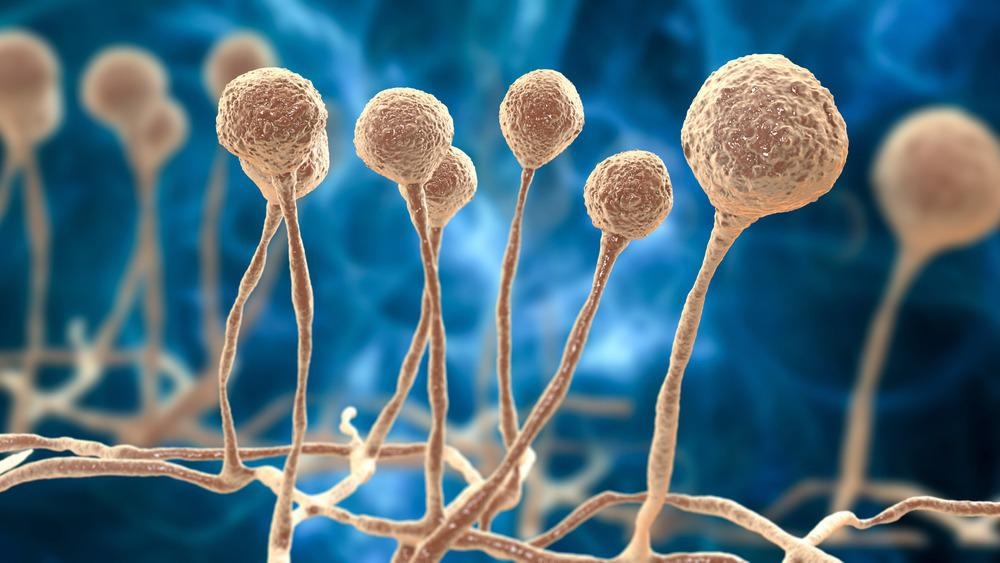In an article published in the journal ACS Applied Nano Materials, it was shown that molybdenum diselenide (MoSe2) nanosheets dispersed in the cationic polymer chitosan (CS) exhibit exceptional antifungal activity.

Study: Eradication of Fungi Using MoSe2/Chitosan Nanosheets. Image Credit: Kateryna Kon/Shutterstock.com
Growing Concern of Fungal Infections
Fungal infections are one of the most severe worldwide hazards to human health, and have developed significant financial implications. Due to rising antifungal medication resistance, treating fungal illnesses has become more difficult, resulting in significant fatality rates.
Candida Auris (C. Auris) is a newly discovered yeast species that has been linked to infestations in hospitals all around the world.
Its international expansion, proclivity for outbursts in healthcare facilities, and resistance to increased infection prevention and control (IPC) procedures are all creating significant concerns.
C. Auris is more likely to infect critically sick individuals and is becoming increasingly resistant to antifungal medications with greater minimum inhibitory concentrations (MICs) than typical, earning it the moniker "multidrug-resistant" (MDR).
Current therapies for fungal illnesses have major limits against MDR fungi, necessitating the development of innovative therapeutic options as soon as possible.
Limitations of Existing Drugs
Fungal pathogens have multiple well-documented resistance mechanisms, resulting in the eventual inefficacy of medicines like 5-flucytosine & amphotericin B.
Although experts are looking into new strategies to combat these resistant fungal diseases, new resistance genes are emerging and multiplying at a much quicker rate.
As a result, new ways to strengthen the antifungal pipelines are required.
Nanomaterials have recently been employed to create new antibacterial agents with unique chemical and physical characteristics. Unfortunately, their toxic effects have made them difficult to be used in biological applications.
Recent Advances in Biocompatible Antifungal Agents
A range of nanomaterials as antifungal agents have been studied extensively. Antimicrobial effects of carbon-based nanomaterials (CBNs), such as graphene and graphene oxide, have also been widely researched.
Recently, transition metals have shown their promising potential in biological applications. Their enormous surface area, inertness to water, and good biocompatibility, which are linked to their 2D structure and improved biocompatibility, have shown considerable promise in antibacterial activity.
Simultaneously, research and development of biological materials to combat increasingly drug-resistant bacteria are gaining traction.
Chitosan (CS) is a benign, compatible, and compostable cationic polysaccharide with a wide range of medicinal qualities, including antibacterial activity.
When CS penetrates the cell cytoplasm, it inhibits mRNA production, leading to apoptosis and making it an efficient antifungal drug. Because CS is positively charged, it may engage in electrostatic interactions with the negative charges in the fungal cell wall, making it very target-specific, and can cause cytoplasm leakage by increasing the porosity of cell membranes.
Chitosan can also act as a sequestering agent, binding to trace minerals and reducing fungal cell development.
Introducing nanomaterials to a CS matrix has been demonstrated to improve antibacterial activity while retaining cytocompatibility in previous literature. As a result, the coupling of CS with 2D materials offers a lot of promise for making antifungal medicines to fight infectious fungus.
Key Findings of the Study
In this work, liquid phase flaking of pure MoSe2 yielded MoSe2 nanofibers scattered in chitosan (MoSe2/CS), culminating in a dispersion of surfaces and depths of nanofibers enveloped in CS.
The generated MoSe2 nanostructure had outstanding antifungal properties. A series of scientific experiments looked into the physical and chemical characteristics of MoSe2/CS nanofibers on the cellular cytoplasm of fungal cells and found that a vast majority of the cells had depolarized and destroyed membranes.
The exterior lipid micelles enclosing the infected cell are structurally disturbed owing to contact with MoSe2/CS nanostructure, as shown by high-resolution imaging using several microscopy techniques.
Overall, transmembrane damage, depolarization of cells, and inactivation of metabolism have a synergistic impact. Several cultures of the highly virulent and multi-drug inert fungus C. Auris were also killed using MoSe2/CS nanofibers.
Biocompatibility tests revealed that the MoSe2/CS nanofibers preserved the survival of mammal cells in the presence of red blood cells by more than 90%.
These results reveal that MoSe2/CS nanofibers are very effective at destroying fungus while also being relatively nontoxic, implying that they might be useful in a range of biological applications requiring antimicrobial effectiveness.
Continue reading: Clinical Applications of Chitosan Nanoparticles.
Reference
Saha, S., Gilliam, M. S., Wang, Q. H., & Green, A. A. (2022). Eradication of Fungi Using MoSe2/Chitosan Nanosheets. ACS Applied Nano Materials. Available at: https://pubs.acs.org/doi/10.1021/acsanm.1c01013
Disclaimer: The views expressed here are those of the author expressed in their private capacity and do not necessarily represent the views of AZoM.com Limited T/A AZoNetwork the owner and operator of this website. This disclaimer forms part of the Terms and conditions of use of this website.